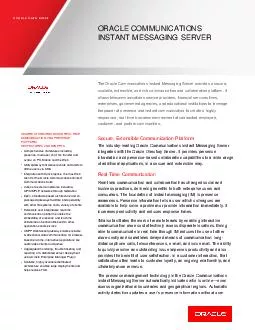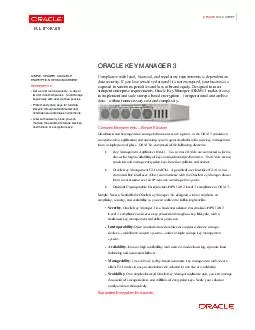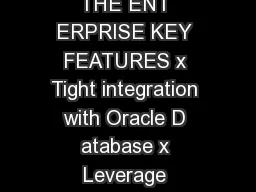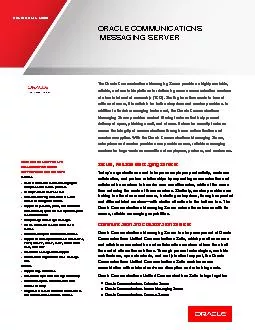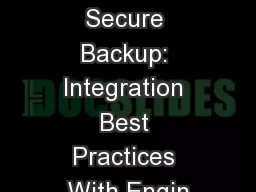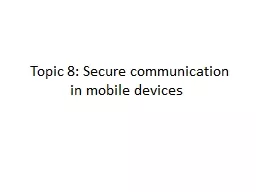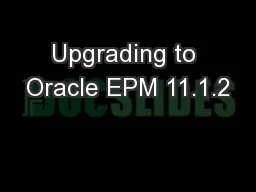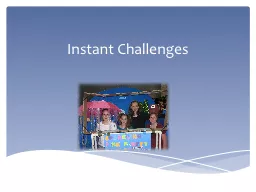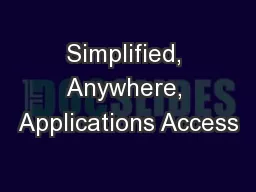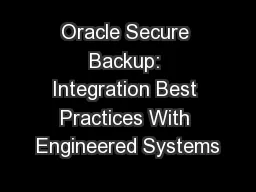PDF-ORACLE DATA SHEET ORACLE COMMUNICATION S INSTANT MESSAGING SERVER SECURE STANDARDS BASED
Author : marina-yarberry | Published Date : 2014-10-20
Federation with SIPSIMPLE networks x Open standards based architecture and co packaged gateways facilitate interoperability with other IM systems and public IM networks
Presentation Embed Code
Download Presentation
Download Presentation The PPT/PDF document "ORACLE DATA SHEET ORACLE COMMUNICATION S..." is the property of its rightful owner. Permission is granted to download and print the materials on this website for personal, non-commercial use only, and to display it on your personal computer provided you do not modify the materials and that you retain all copyright notices contained in the materials. By downloading content from our website, you accept the terms of this agreement.
ORACLE DATA SHEET ORACLE COMMUNICATION S INSTANT MESSAGING SERVER SECURE STANDARDS BASED: Transcript
Download Rules Of Document
"ORACLE DATA SHEET ORACLE COMMUNICATION S INSTANT MESSAGING SERVER SECURE STANDARDS BASED"The content belongs to its owner. You may download and print it for personal use, without modification, and keep all copyright notices. By downloading, you agree to these terms.
Related Documents

